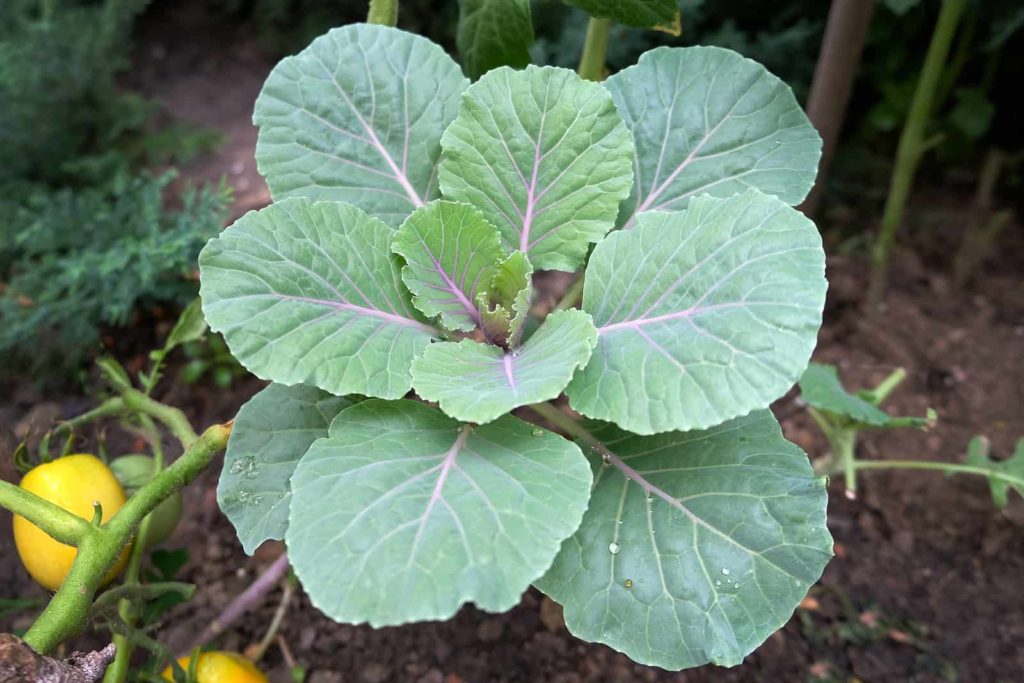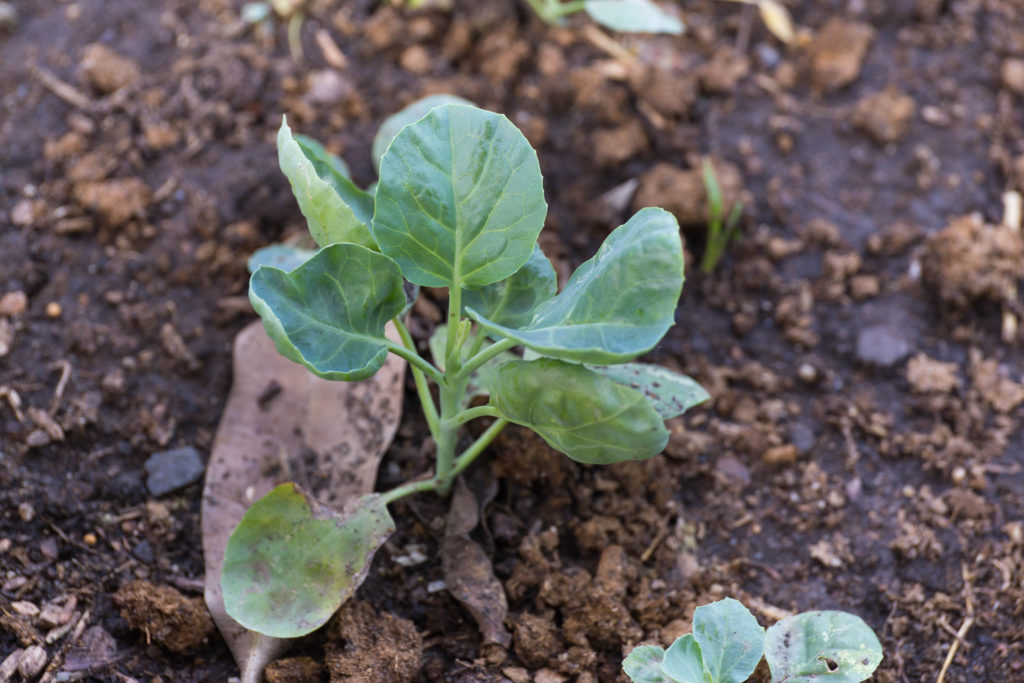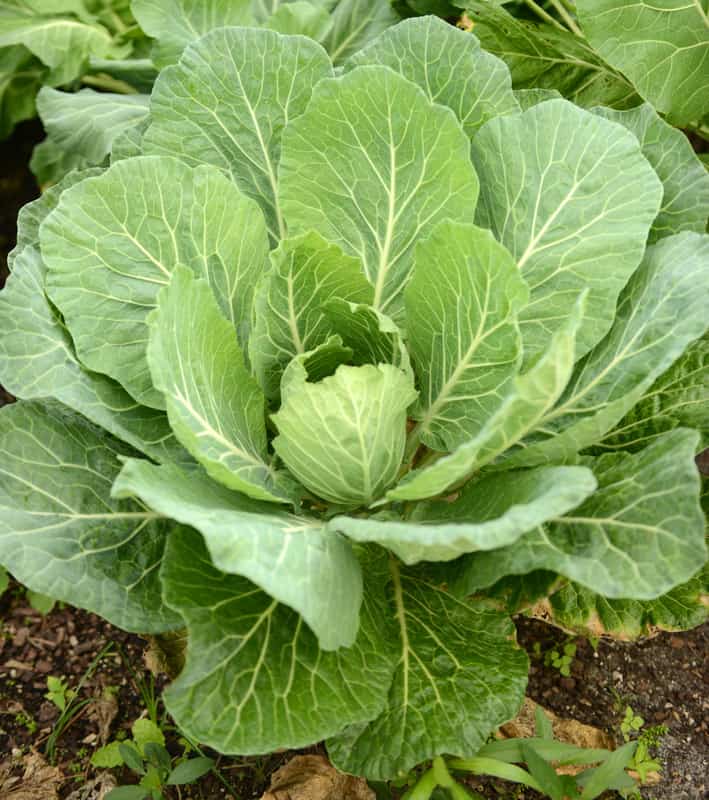Collards are a hardy cool-weather crop. Collards can be grown in early spring and in mid to late autumn. Collards thrive in temperatures between 65°F and 75°F (18-24°C) and can withstand frost down to 25°F (-4°C).
If summers are warm in your region, start collards in late winter or early spring for a late spring or early summer harvest. Where summers are cool, plant in mid-to-late spring for late summer and fall harvest. Where summers are hot, sow seed in midsummer for a late fall or early winter harvest.
Collards are very hardy and most flavorful after being hit by frost. Time your planting so that collards come to harvest in cool weather.
Collards mature in 80 days depending on the variety.
Good Products for Growing Collards at Amazon:
- Safer Brand Insect Killing Soap
- Monterey BT Caterpillar Killer
- Harris Diatomaceous Earth with Duster
- Bonide Sulfur Fungicide
Sow collard seeds in the garden 3 to 4 weeks before the last frost. Start transplants 6 to 8 weeks before setting out in the garden. Transplants can be set in the garden 4 weeks before to 2 weeks after the last frost. Start transplants for a fall crop about 95 days before the first expected frost.
Collards grow best in well-drained sandy soil but will adapt to a wide range of conditions. Collards will grow well in loamy soil that is well-drained. Plant collards in full sun.
Collards reach maturity 70 to 80 days after sowing, but you can start harvesting as soon as leaves are edible size, in about 40 days. Extend the harvest by picking a few leaves at a time from the bottom of the stalk, working upward. Collards are best when used soon after harvest.

Collards planting details
- Sowing depth: ½ inch (12mm)
- Space between plant after thinning: 15-18 inches (30-45cm)
- Days to sprout: 4-10
- Days to harvest: 70-80 days for mature plants; small plants can be harvested at edible size about 40 days after setting out transplants
- Storage period: 2-4 weeks
- Seeds per 100-row feet: ½ ounce (14 grams)
- Yield per 100-row feet: 50 pounds (20kg)
- Varieties: Champion, Georgia, Hicrop
Collard sowing and planting tips
- Start collards from seeds or transplants.
- Collard seeds are viable for 4 years.
- Start seeds indoors 6 to 4 weeks before the last frost in spring or 12 to 10 weeks before the first frost in fall.
- Start seeds in individual pots or flats.
- Sow seed ¼ to ½ (6-13 cm) inches deep in the seed-starting mix.
- Keep the mix moist but not wet.
- Collard seed should germinate in 5 to 10 days at an optimal temperature of 75°F (24°C) or thereabouts.
- Transplant seedlings into the garden when they are 4 to 6 inches (10-15 cm) tall with 2- to 4-leaves and daytime temperatures reach 50°F (10°C); firm transplants into the soil by hand.
- Prefers a soil pH range of 6.0 to 7.5.
- Set transplants slightly deeper than they grew in pots or flats.
- Grow collards in full sun for best yield—tolerates partial shade.
- Add 3- to 4- inches of compost and well-aged manure into the planting bed, before transplanting; collards need friable, moisture-holding soil.
- Avoid planting where cabbage family crops have grown recently.
- Space plants 18 to 20 inches (45-50 cm) apart in all directions.
- Space rows 24-42 inches (60-106 cm) apart.
- Protect seedlings from the cold for 2 to 3 weeks after planting by covering them with a cloche or plastic tunnel or cold frame.
- Fertilize with an organic fertilizer such as fish emulsion at half strength.
- Common pest enemies are aphids, cabbage worms and loopers, cabbage worms, and cutworms.
More tips at: How to Grow Collards.
Interplanting: Grow collards with beets, green onions, peas, southern peas, tomatoes, or peppers.
Container Growing: A single plant will grow in a 10-inch (25 cm) pot that is 12 inches (30 cm) deep.

Collard planting calendar
Planting for spring harvest:
- 7-8 weeks before the last frost in spring: start seeds indoors.
- 6-8 weeks before the last frost in spring: direct-sow seed in the garden under a plastic tunnel.
- 3-4 weeks before the last frost in spring: direct-sow seed in the garden without cover; minimum soil temperature should be 40°
- 2-3 weeks before the last frost in spring: transplant seedlings into the garden.
Planting for fall and winter harvest:
- 14-16 weeks before the first frost in fall: start seed indoors.
- 12-14 weeks before the first frost in fall: direct-sow seed in the garden.
- 8-12 weeks before the first frost in fall: transplant seedlings into the garden under a plastic tunnel.
Collards seed sowing dates
(These dates are for the Northern Hemisphere)
| Average date of the last frost | Planting dates |
| Jan. 30 | Jan. 1-Feb. 1 |
| Feb. 8 | Jan. 1-Feb. 15 |
| Feb. 18 | Jan. 1-Mar. 15 |
| Feb. 28 | Jan. 15-Mar. 15 |
| Mar. 10 | Feb. 1-Apr. 1 |
| Mar. 20 | Feb. 15-May 1 |
| Mar. 30 | Mar. 1-June 1 |
| Apr. 10 | Mar. 1-June 1 |
| Apr. 20 | Mar. 10-June 1 |
| Apr. 30 | Apr. 1-June 1 |
| May 10 | Apr. 15-June 1 |
| May 20 | May 1-June 1 |
| May 30 | May 10-June 1 |
| June 10 | May 20-June 1 |

Recommended collard varieties
‘Champion’, ‘Georgia’, ‘Vates’.
Botanical Name: Brassica oleracea Acephala group
Collard is a member of the Brassicacea (Cruciferae) or cabbage family.
Collards articles on Harvest to Table:
How to Plant and Grow Collards
How to Harvest and Store Collards
Five Ways to Cook and Serve Collards
Garden Planning Books at Amazon:
- Vegetable Garden Almanac & Planner
- Kitchen Garden Grower’s Guide Vegetable Encyclopedia
- Vegetable Garden Grower’s Guide
- Tomato Grower’s Answer Book















